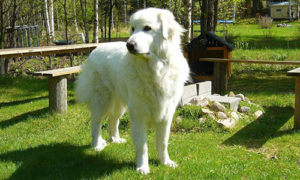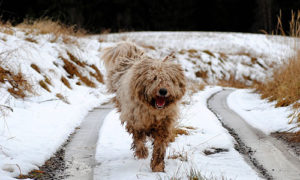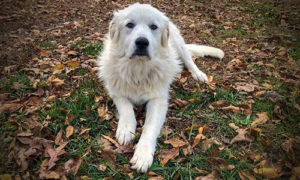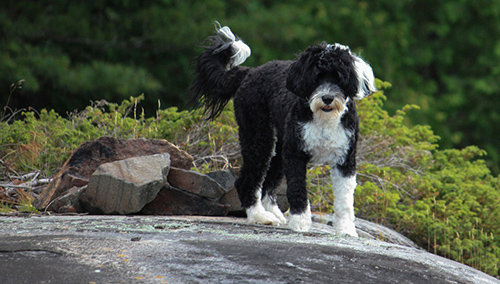
The Portuguese Water Dog is the consummate water working dog, and it shares some of its lineages with the Poodle. These water dogs’ ancestors were herding dogs from the Central Asian Steppes. Many breed historians believe that the Visigoths, Moors, and the Berbers brought them to Portugal during the fifth to the eighth century.
Once in Portugal, these water dogs distinguished themselves via their attraction for water, and their ability to herd fish into nets, retrieving lost fishing nets or equipment, and serving as a boat-to-boat or boat-to-shore carrier. Also, the Portuguese Water Dogs assisted trawler crews fishing the waters from Portugal to Iceland.
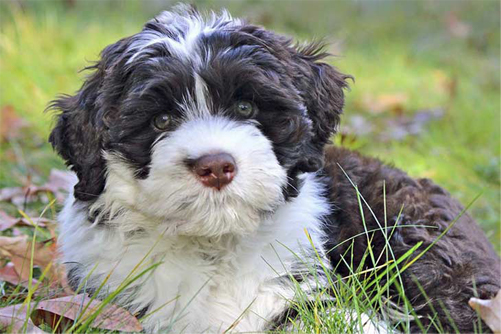
In its native land, this breed is called Cao de Agua, which translates to a dog of water. The Portuguese Water Dog comes in a long-haired variety known as the Cao de Agua de Pelo Ondulado and a curly-coated variety known as the Cao de Agua de Pelo Encaradolado.
Unfortunately, the Portuguese fishermen and their dogs began to disappear from the coast in the early twentieth century because of traditional fishing methods’ demise. However, thanks to Dr. Vasco Bensuade, a wealthy shipping tycoon, the breed was saved from extinction. His promotion of the dog led to the reorganization of the breed club and the standard writing. As a result, the first dogs entered the show ring shortly after that.
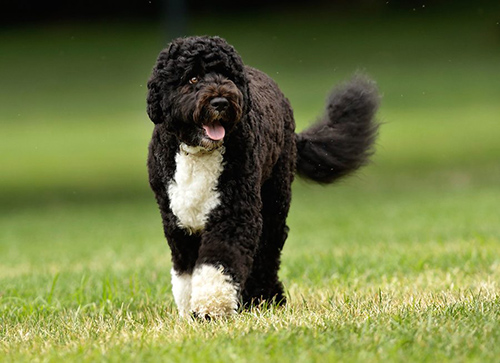
The 1950s saw a brief appearance of the Portuguese Water Dog in England, and shortly after that, the breed virtually disappeared. During this time, the first water dogs appeared in America, where they slowly gained popularity. In 1984, they gained recognition from the AKC, which saw their demand surge a lot faster. Today, they’re proving to be a highly sought after companion dog.
Portuguese Water Dog Breed Facts
WEIGHT: male: 42-60 pounds; female: 35-50 pounds
HEIGHT: male: 20-23 inches; female: 17-21 inches
POPULARITY: Somewhat popular
FAMILY: Waterdog
AREA OF ORIGIN: Portugal
DATE OF ORIGIN: Middle ages
ORIGINAL FUNCTION: Fishing aid
TODAY’S FUNCTION: Water rescue
OTHER NAME: Cao de Agua
Temperament and Upkeep
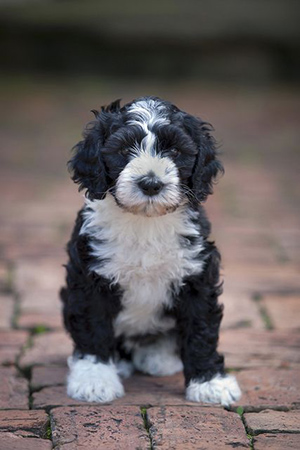
The friendly and outgoing Portuguese Water Dog is a fun-loving, family-loving, water-loving dog. They’re excellent with children, other dogs as well as other pets. They respond well to direction, and they’re compassionate. The Portuguese are excellent dogs for an active family looking for an adventurous, obedient, and affectionate companion.
The Portuguese Water Dog is an energetic breed that demands daily physical and mental exercise, comprising swimming and retrieving. However, if the water is not available, a long walk, jog, or vigorous romp is okay. The coat needs a combing every other day and scissoring and clipping at least once a month.
Health
Major concerns: PRA
Minor concerns: GM1 storage disease, distichiasis, Addison’s, CHD, juvenile cardiomyopathy, hair loss (follicular dysplasia)
Occasionally seen: irritable bowel syndrome, seizures
Suggested tests: eye, hip, DNA for GM1, DNA for PRA, (cardiac)
Life span: 10-14 years
Form and Function
The PWD is an active breed of a medium build and a little longer than it is tall. It can work in and out of the water for long periods thanks to its muscled and robust build. Its coat is copious and singular, which can be wavy or curly. They’re two acceptable clips: The lion clip, which allows for the muzzle and middle part, up to the tail tip, are clipped, and the retriever clip, which the entire coat is scissored to about 1 inch in length, with the tail tip again left at full range. The dog’s expression is steady, piercing, and alert, reflecting its spirited temperament.


